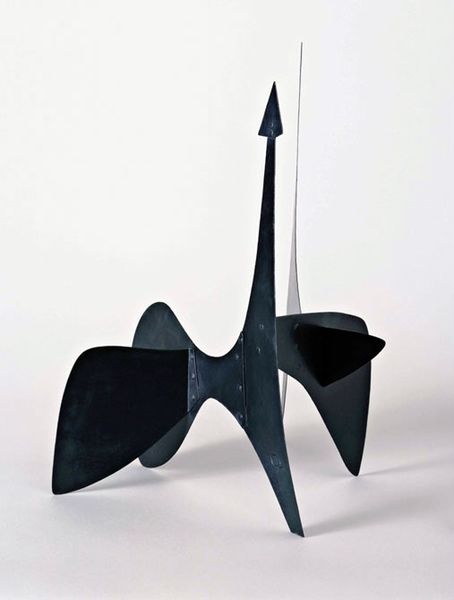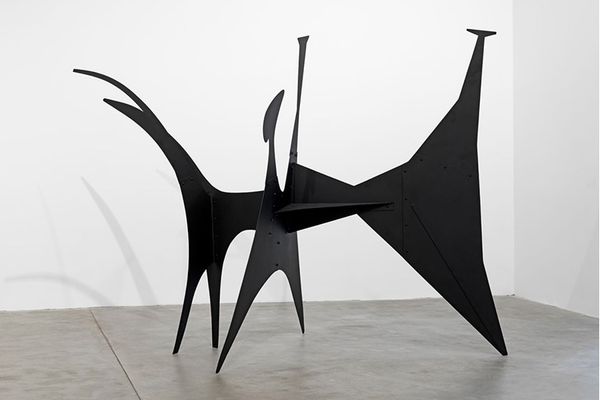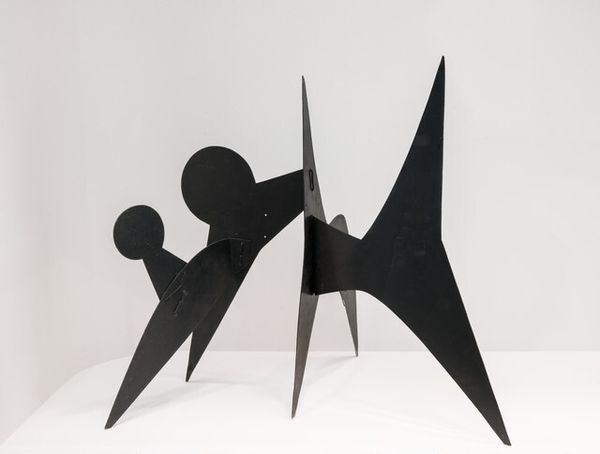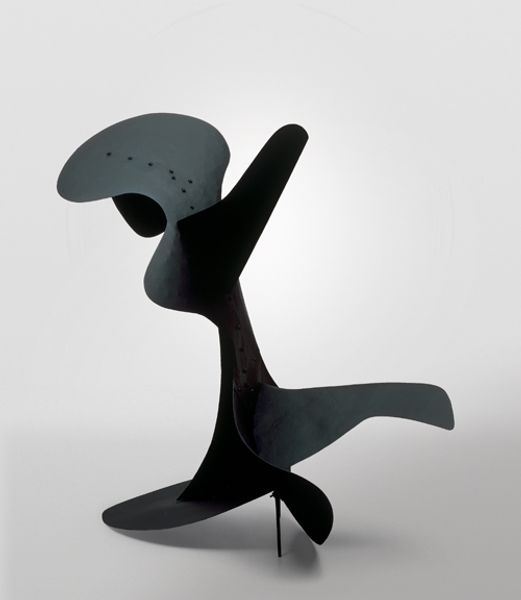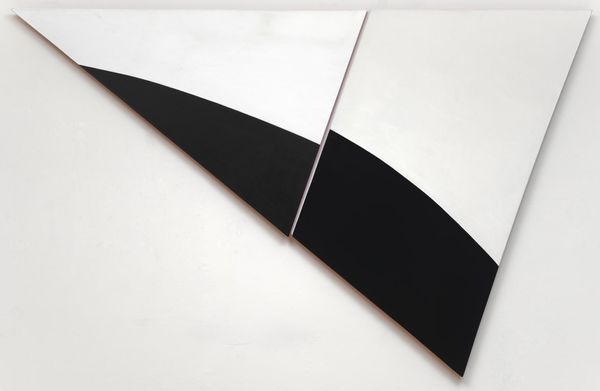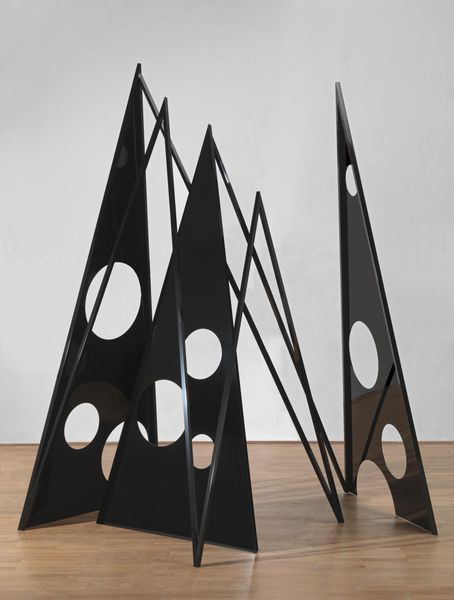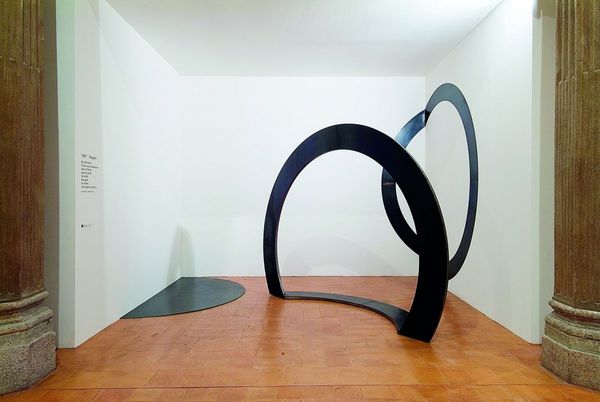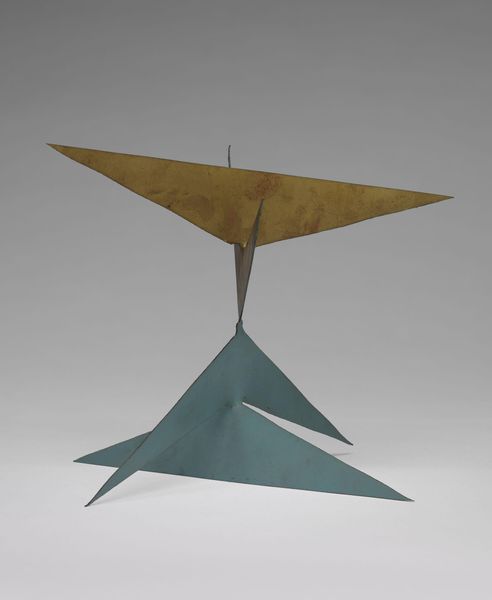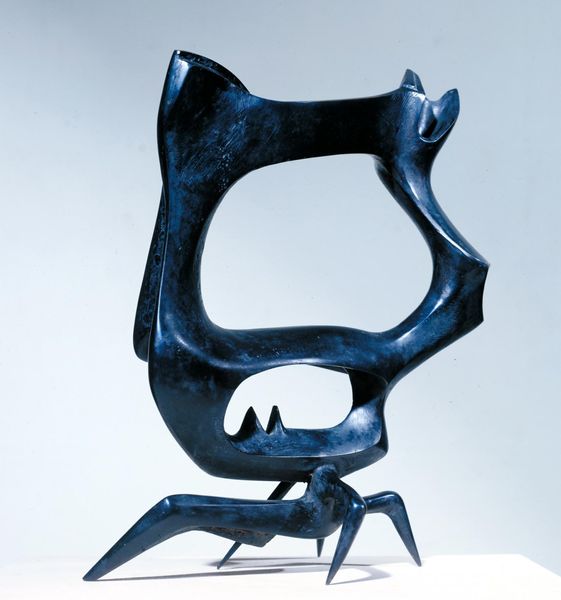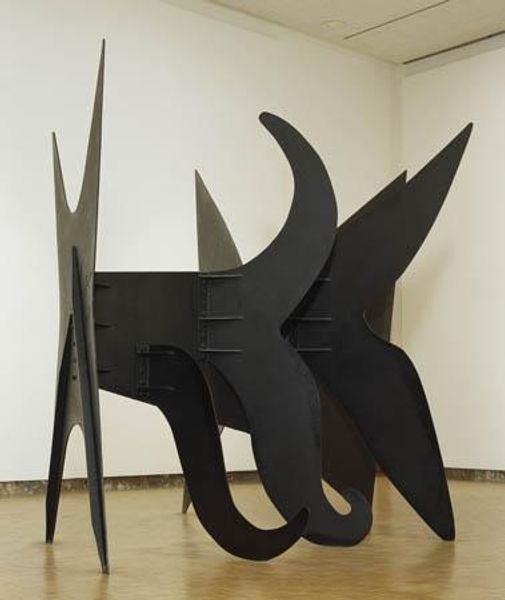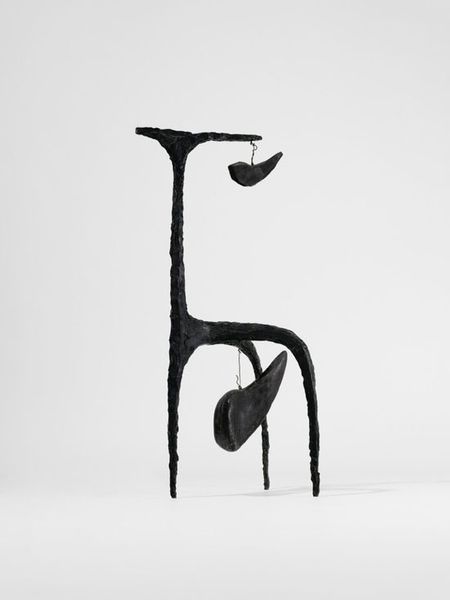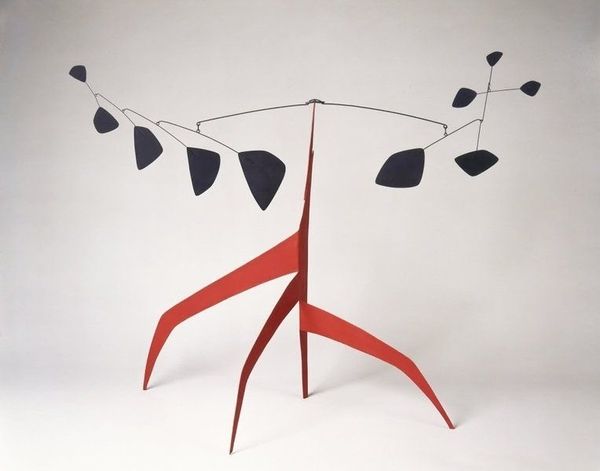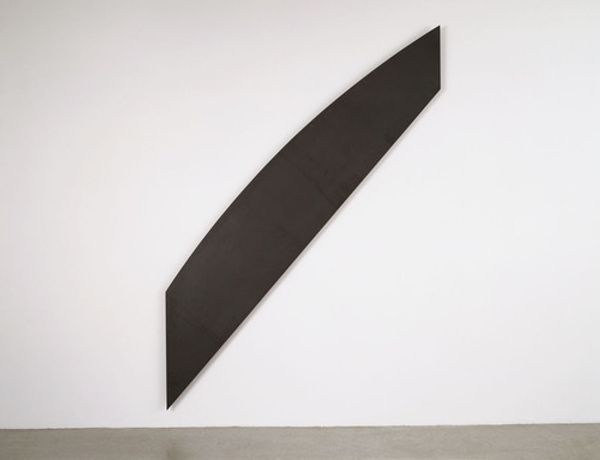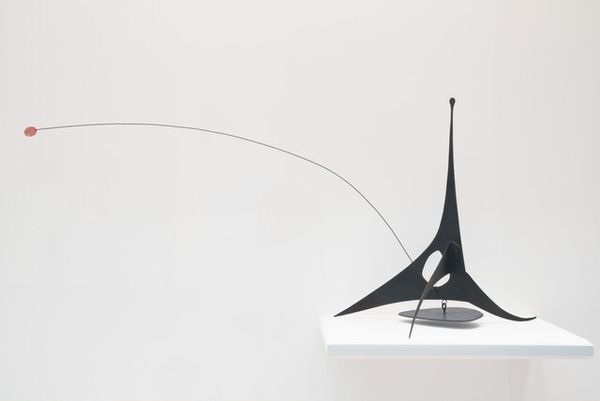
metal, sculpture
#
abstract-expressionism
#
monochromatic
#
metal
#
form
#
geometric
#
black-mountain-college
#
sculpture
#
abstraction
#
line
#
modernism
Copyright: Alexander Calder,Fair Use
Editor: Here we have Alexander Calder’s "The Big Ear," created in 1943, assembled in metal. It has this stark, imposing quality; a monochrome, almost skeletal abstraction. What's your take on this sculpture? Curator: Well, let's think about the materiality. It’s fabricated from metal, right? So, what connotations does that carry? Think about wartime production, industrial labor. The smoothness almost denies the hand, yet the rivets – can you see them? – acknowledge the process of assembly. Is this a celebration of industry or a critique? What do you think that its stark nature is trying to evoke during its time? Editor: I see what you mean. The rivets are like these small points of evidence that show this was something made by someone. And thinking about 1943, I guess the steel also is relevant to its function during wartime, for military productions? Curator: Exactly! It raises questions about the artist's role. Calder wasn't just playing with form; he was engaging with the material realities of his time. It encourages discussion about the means of producing art as well. The sculpture appears motionless now. But how may Calder encourage kinetic art from it in the future? What could this represent when his work started moving? Editor: I see now. Looking closely at the production methods brings so much context into it. Not just about forms, but the context, and how it comments on social ideas. Curator: Precisely. We start seeing it’s not divorced from the social, and industrial contexts of its time. Material and the method become a commentary. Editor: I never considered all of this. It gives so much context. I never would've considered it wasn't divorced from the social landscape during this period. Curator: It transforms our understanding, doesn't it? "The Big Ear" stops being just a form, but starts becoming this embodiment and question on industrialization and social values.
Comments
No comments
Be the first to comment and join the conversation on the ultimate creative platform.
